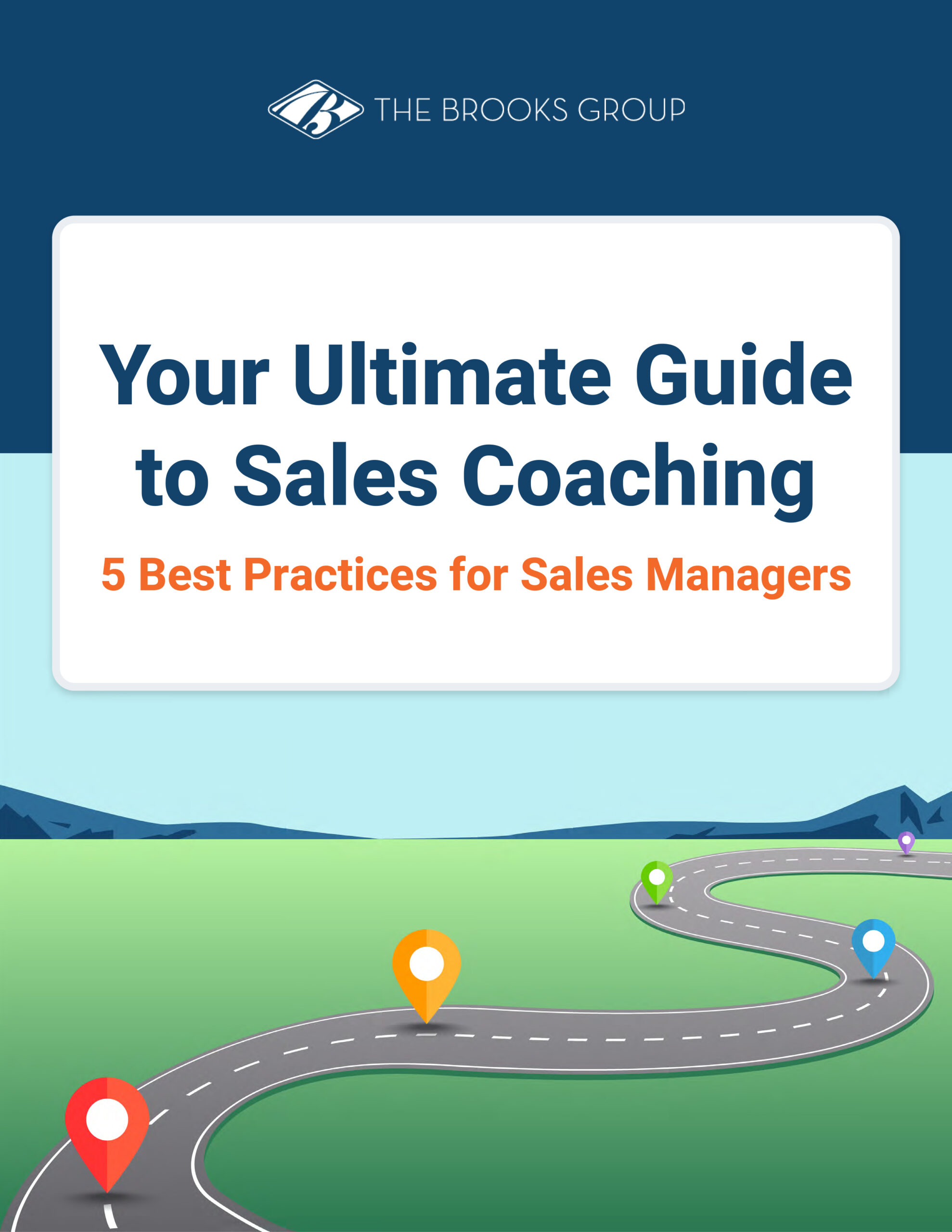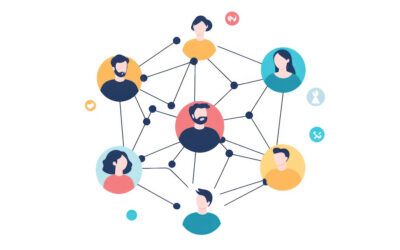Finance, operations, and management, oh my! The B2B buying journey is getting longer and more complex. The average B2B buying committee size is now seven, but groups as large as 20 are not unheard of.
Bigger deals usually mean bigger committees, which present unique challenges compared to selling to an individual decision maker or even a small group. Lack of clear authority, conflicting priorities, and the logistics of keeping 7, 10, or 12 people in the loop make the B2B buying process an increasingly tough sale.
But with the right skills and tactics, sales leaders can equip their teams to overcome challenges and win these deals.
Identifying Buying Committee Members
The first step is figuring out who is involved. Buying committee members can be diverse, with unique roles, perspectives, and responsibilities. These stakeholders typically fall into four primary categories:
Decision Makers
Decision makers hold the ultimate authority for the purchase. Their choices directly shape the direction of the procurement process and determine which solutions are selected.
Key decision makers often include:
- C-Suite executives: High-level executives such as CEOs, CFOs, or CTOs who oversee strategic decision-making within the organization.
- Department heads: Leaders of specific departments or teams who are accountable for the success of the purchased solution in their areas.
- Procurement managers: Professionals tasked with managing the procurement process, negotiating contracts, and ensuring compliance with organizational policies.
Decision Sponsors
Decision sponsors are advocates for your solution within the buying committee, championing its merits and benefits to their peers and superiors. They play a crucial role in securing buy-in and consensus among stakeholders.
Decision sponsors may include:
- Project managers: Individuals responsible for overseeing the implementation of the purchased solution and ensuring its successful integration into existing workflows.
- Internal champions: Enthusiastic supporters of your product or service who actively promote its adoption within the organization.
Purchase Influencers
Purchase influencers wield significant sway over the outcome of the purchasing decision, despite not holding direct authority over it. Their opinions, expertise, and recommendations heavily impact the final choice.
Purchase influencers may include:
- Subject-matter experts (SMEs): Individuals with specialized knowledge relevant to the product or service being considered.
- Consultants: External advisors or consultants who provide insights and recommendations to the buying committee.
End Users
End users are the individuals or teams who will directly adopt the purchased solution in their daily operations. Understanding their needs, preferences, and pain points is essential for ensuring successful adoption and long-term satisfaction.
Users may include:
- Frontline employees: Those directly involved in executing tasks or using the product within their daily workflows.
- IT administrators: Professionals responsible for managing and maintaining the technical infrastructure supporting the solution.
- Customer support representatives: Personnel tasked with providing assistance and troubleshooting to users as they navigate the implementation and usage of the product or service.
By identifying these buying personas within the buying committee, B2B sellers can gain invaluable insights into the diverse needs and priorities driving the decision-making process.
This deeper understanding enables you to tailor your messaging, content, and engagement strategies to resonate with each stakeholder group—facilitating smoother sales cycles and driving greater customer satisfaction and loyalty.
Challenges of Selling to a Buyer Committee
Because of the number of stakeholders and the complexity of the B2B buying journey, there are many common challenges and pitfalls. By understanding and addressing these challenges, sales professionals can navigate the sales process more effectively, increasing their chances of success.
Multiple Stakeholders
It’s essential to understand the needs and motivations of each committee member to tailor your sales approach effectively. But it can be difficult to understand and align the priorities, preferences, and agendas of multiple individuals.
Differing Perspectives
Committee members may come from diverse backgrounds and departments, leading to varying perspectives on the problem your product or service aims to solve. Balancing these perspectives and ensuring your solution addresses the concerns of all stakeholders is crucial.
Achieving Consensus
Building consensus among committee members can be challenging, especially if there are conflicting opinions or priorities. Sales professionals must navigate these dynamics diplomatically, guiding the committee toward a unified decision that benefits the organization as a whole.
Lengthy Decision-Making Process
Selling to a committee often involves a more extended decision-making timeline due to the need for collaboration and consensus-building. Sales professionals must be patient and proactive in nurturing relationships with committee members throughout the process.
Information Overload
With multiple decision makers involved, there are many details, schedules, and materials to manage and communicate. It’s important to streamline your message and focus on the most relevant information for each committee member to avoid overwhelming them.
Risk Aversion
Committee members may be risk averse, especially in enterprise settings where large investments are at stake. Addressing concerns related to risk, ROI, and potential drawbacks of your solution is essential to gaining buy-in from the entire committee.
Lack of Ownership
In some cases, committee members may defer decision-making responsibilities or pass the decision to another department or individual. Sales professionals must navigate these dynamics and ensure the decision-making process progresses smoothly without getting stalled.
Competing Priorities
Committee members may have competing priorities and limited bandwidth, making it challenging to secure their attention and commitment to your proposal. Effective communication and value proposition alignment are key to overcoming this challenge.
Tactics for Tackling the B2B Buying Process
These challenges can be overcome with the right approach. To be more successful when selling to a buying committee, sales professionals need to be strategic and adaptable. Here are tactics you can use:
Understand B2B Buying Committee Dynamics
Gain insights into the roles, responsibilities, and priorities of each committee member. Identify key influencers and decision makers within the group and plan your approach accordingly.
Use a Consultative Sales Approach
Buying committee members value strategic partnerships and consultative relationships. Position yourself as a trusted advisor who can provide insights, expertise, and solutions tailored to the company’s unique needs.
Research and Prepare
Conduct thorough research on the organization, its industry, and individual committee members. Ask probing questions to understand their pain points and goals so you can position your solution effectively.
Customize Your Approach
Tailor your messaging and value proposition to resonate with the specific needs and priorities of each committee member. Highlight how your solution addresses their unique concerns and contributes to the overall objectives of the organization.
Focus on Value and ROI
Clearly articulate the value proposition of your solution and its potential return on investment (ROI) for the organization. Demonstrate how your offering can deliver tangible benefits and solve the committee’s most pressing challenges.
Help Build Consensus
Guide the committee through the decision-making process by facilitating discussions, addressing concerns, and highlighting areas of alignment. Help bridge any gaps in understanding or perspective among committee members.
Cultivate Relationships
Build trust and rapport with each committee member. Invest time in understanding their individual preferences and communication styles, and tailor your interactions accordingly.
Navigate Objections
Be prepared to address objections and overcome obstacles throughout the sales process. Anticipate potential concerns or hesitations of committee members and proactively address them with confidence and detailed evidence to support your claims.
Manage the Timeline
Stay proactive and engaged throughout the decision-making process, keeping the momentum going and ensuring deadlines are met. Follow up regularly, provide updates as needed, and be responsive to any additional requests or inquiries from the committee.
Follow Up and Follow Through
After the decision has been made, continue to nurture the relationship with the committee members. Ensure a smooth transition to implementation and provide ongoing support to reinforce the value of your solution.
Training Recommendations to Navigate Buying Committees Successfully
Sales leader support is crucial for enterprise sales professionals. With long sales cycles and deal sizes that can reach the multi-millions, selling to a buying committee requires stamina, smarts, focused training, and coaching. Here are essential initiatives to train and coach sales teams effectively.
Offer Comprehensive Sales Training
Develop sales training programs that cover the unique challenges and dynamics of selling to a committee. Offer guidance on understanding roles, conducting thorough research, tailoring messaging, and facilitating consensus building.
Run Role-Playing Exercises
Conduct role-playing exercises to simulate sales scenarios involving buying committees. Encourage team members to take on different roles within the committee and practice addressing objections, navigating dynamics, and delivering persuasive presentations.
Share Case Studies and Win Stories
Share case studies and success stories of past deals where the team successfully sold to buying committees. Analyze the strategies and tactics that contributed to those successes and distill them into actionable best practices for the team to follow.
Foster Cross-Functional Collaboration
Encourage collaboration between sales team members and SMEs in other departments such as marketing, product development, and customer success. Leverage the expertise and insights of cross-functional teams to enhance the team’s understanding of customer needs and preferences.
Provide Feedback and Coaching
Give ongoing feedback and coaching to sales team members throughout the sales process. Offer constructive criticism, identify areas for improvement, and provide guidance on how to adapt strategies and tactics to better address the needs of buying committees.
Develop Persuasive Communication Skills
Focus on developing persuasive communication skills that resonate with committee members from various backgrounds and departments. Train team members on how to effectively articulate the value proposition, address objections, and build consensus among stakeholders.
Emphasize Relationship Building
Stress the importance of building strong relationships with committee members based on trust, credibility, and rapport. Train team members on how to establish connections, cultivate rapport, and effectively navigate interpersonal dynamics within the committee.
Stay Updated on Industry Trends
Encourage sales team members to stay up to date on industry trends, market developments, and emerging technologies relevant to the committee’s needs. Provide resources and opportunities for professional development to ensure team members are equipped with the latest knowledge and insights.
Encourage Knowledge Sharing
Make it a regular practice to share knowledge within the sales team. Encourage team members to discuss insights, strategies, and best practices for selling to buying committees, and facilitate peer-to-peer learning and mentorship opportunities.
Measure and Track Performance
Establish metrics and KPIs to measure the effectiveness of the team’s efforts in selling to buying committees. Track key indicators such as win rates, deal velocity, and customer satisfaction to identify areas for improvement and optimize sales strategies accordingly.
By implementing these recommendations, sales leaders can empower their teams to effectively navigate the complexities of selling to buying committees and drive success in enterprise sales efforts.
Learn More
Find out how to gain access to senior executives and C-level decision makers: Selling to the C-Suite: Strategies for Reaching Executive Decision Makers.
White Paper Download
Your Ultimate Guide to Sales Coaching
Effective sales coaching can have a huge impact on your business, especially in it’s contribution to revenue. Unfortunately, many sales leaders may be aware that their managers need to spend more time coaching, but formal programs tend to be poorly executed or non-existent.
Download this ultimate guide to enhance your coaching practices by focusing on high-impact sales coaching activities.





